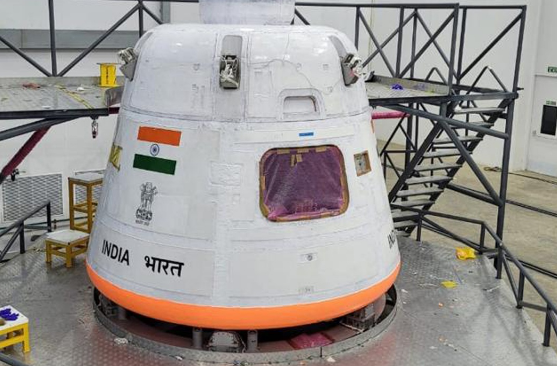Current context:
India has named Group Captains Prasanth Balakrishnan Nair, Ajit Krishnan, Angad Pratap, and Wing Commander Shubhanshu Shukla as astronauts designate for Gaganyaan, the country’s first crewed space mission.
About current context:
- The first unmanned test flight, Gaganyaan-1, is expected to be launched by the end of 2024 to assess technology readiness.
- India’s Gaganyaan Mission, a testament to its scientific prowess, is set to elevate the nation into the elite spacefaring league.
- This ambitious project, spearheaded by the Indian Space Research Organisation (ISRO), aims to send a crew of three astronauts on a historic voyage to the Low Earth Orbit (LEO) and safely return them to our blue planet.

The Gaganyaan Mission: An Overview
- Objective: The primary goal of the Gaganyaan Mission is to demonstrate India’s indigenous capability to undertake human space flights.
- Significance: If successful, India will join the ranks of the United States, Russia, and China as a nation with human spaceflight capabilities.
- Timeline: The first manned spaceflight is anticipated to occur in 20241.
Key Objectives of Gaganyaan Mission
Human Space Flights:
- The immediate aim is to showcase our ability to send astronauts into space using our own launch vehicle.
- This achievement will mark a giant leap for Indian space exploration.
Space Exploration:
- Beyond the initial mission, Gaganyaan lays the groundwork for a sustained Indian human space exploration program.
- It opens doors to scientific research, technological advancements, and international collaborations.
Technologies Driving Gaganyaan
To ensure crew safety during this audacious endeavor, ISRO has developed cutting-edge technologies:
Human-Rated LVM3 (Launch Vehicle Mk III):
- A modified version of ISRO’s reliable LVM3 rocket serves as the launch vehicle.
- It is reconfigured to transport humans safely into the intended orbit.
The three-stage propulsion system includes solid, liquid, and cryogenic stages.
Orbital Module (OM):
- The OM orbits Earth and comprises the Crew Module (CM) and Service Module (SM).
Crew Module (CM):
- A habitable space with an Earth-like environment for astronauts.
- Equipped with control systems, communication, navigation, guidance, and avionics.
- Designed for re-entry into Earth’s atmosphere, ensuring crew safety during descent.
Service Module (SM):
- Provides necessary support to the CM while in orbit.
- Equipped with state-of-the-art avionics systems.
- Ensures the mission’s success by maintaining CM functionality.
Way forward
- Training: Four Indian astronaut-candidates have already undergone generic space flight training in Russia.
- Inspiration: Gaganyaan inspires our youth, encouraging careers in science and technology.
- Employment: It offers ample scope for employment generation and human resource development in advanced science and R&D activities.
Also Read :
Faster Adoption and Manufacturing of Hybrid and Electric Vehicles

